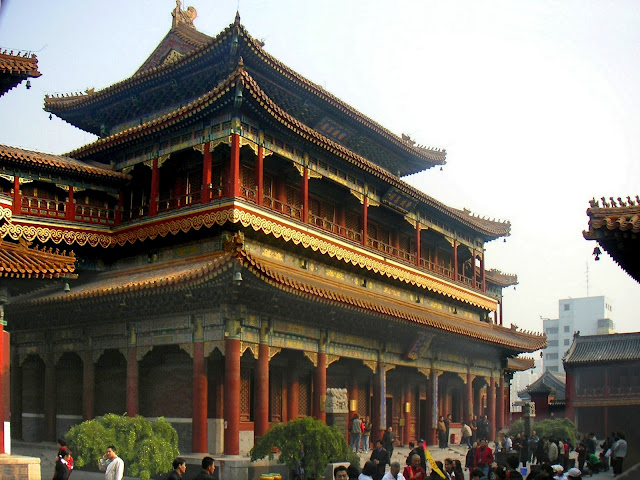Niujie Mosque, Beijing
China has had associations with Islam since the fifth century when Arab envoys first crossed its borders. Although Muslims can be found almost everywhere in China, most of them reside in the Xinjiang, Yunnan and Ningxia provinces. The blend of (Chinese) culture and (Islamic) religion is evidenced in the hundreds of mosques all over China.
One of China’s most important mosques is Niujie Mosque in Beijing, which was built in 996. The name of the mosque itself is interesting- Niu Jie is the name of the street where the mosque is located and literally means ‘Cow Street’, a reference to the prohibition against swine flesh in Islam and to the Muslims’ preference for beef over pork. Niu Jie, therefore, in this context means ‘the street where the people who like beef live’, which is a wonderful way of putting it, I think.
I’ve been to Niujie Mosque twice, the first time in 2004 and the second, more recently on my overland trip last year. I remember not completely enjoying the mosque on the first occasion- it was winter and I had (‘cleverly’) walked all the way from Tianenmen Square to Niu Jie and my feet had felt as though they were about to drop off. This time, I was smarter and took the Beijing underground.
The wonderful thing about Niujie Mosque is that it is distinctively Chinese. There are bits of red here and there- not a colour associated with Islam, but favoured among the Chinese, reminding you instantly of a temple. It is when you look closer that you notice the Arabic writing at the top of the pavilions and inside the prayer hall.
- The men’s prayer hall
The Chinese features, however, weren’t always there. When the mosque was built in 996, it was constructed in a typical Arabic style, consistent with historical records which show that Arab missionaries had built it. The Chinese elements were gradually adopted over the years through numerous renovations and reconstructions.
The mosque looked pretty much the same from last time, although the grounds were much larger now following some expansion work, details of which were proudly set out on the information board.
I took a few photographs in the courtyard in front of the men’s prayer hall and after that made my way to the women’s section. Here, I met two Hui women, a mother and daughter. I tried to make small talk with them but since my knowledge of Mandarin is skeletal (my mother’s exact words), I didn’t get very far in the conversation. Having said that, you can get far with a few smiles, anywhere in the world!
The Niujie Mosque is easy to get to, and I would definitely recommend a visit. If you get lost, stop anyone in the street and ask for the masjid– Arabic for ‘mosque’, but they’ll know what it means here. There are lots of restaurants nearby so if you find yourself stuck in the area during lunch time, don’t worry. Do dress appropriately (no shorts or sleeveless tops, please), as you would in all houses of worship. If you can speak Mandarin, chat with the men in the ticketing office near the entrance, they’re very friendly and were very amused at my attempts to speak to them.
Getting there:
Address: Niujie Mosque, 88, Niu Jie (Cow Street), Xuanwu District, Beijing.
Underground station: Changchun Jie, Line 2. Take exit C1, head south, and walk for 1.5kms.
Open to the public from 7am-7pm. Admission: 10 Yuan.
Note that the mosque will be busy on Fridays from 12pm -1.30pm for prayers, so you might want to avoid visiting this, and any mosque in fact, during those hours.
© 2013 – 2014, Anis. All rights reserved.














